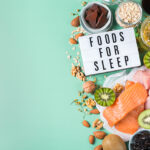GI News Briefs
Tesco Tests

The results of GI testing of 140 foods commercially available in the UK for the supermarket giant Tesco are published for the first time in the British Journal of Nutrition. The testing, conducted by the Oxford Brookes team led by Prof. Jeya K. Henry, found that the majority of GI values of UK foods compared well with published values of foods in the International Table of Glycemic Index and Glycemic Load Values (2002). However, there were a few exceptions such as fruit loaf (higher) and bran flakes (lower), highlighting the importance of testing foods in their country of consumption wherever possible. The number of ready-to-eat meals (24) in the list make this report a welcome addition to the GI database. Most of the mixed meals had a low GI. Cottage pie, shepherds pie and sausage and mash which all include plenty of mashed potato had medium GI values. In his conclusion Henry emphasises that ‘it is important to test the GI of composite meals, instead of trying to calculate the GI from GI tables.’
—British Journal of Nutrition (2005), 94, 922–930
Comment from Professor Jennie Brand-Miller: The decision making behind the common cut-offs for high and low GI (70 or higher, 55 or lower) was based on the scatter of GI values among single foods. These cut-offs are probably not appropriate for mixed meals. If the future holds more testing of composite meals, then the cut-offs need to be redefined, specifically for mixed meals, taking into account the observed range. It’s important to remember that the GI was introduced to rank the glycemic nature of the carbohydrate in individual foods. The purpose was to exchange one carbohydrate source with another in a mixed meal situation. That application remains valid and shifts the focus away from lowering glycemia at all costs (not a good idea), towards overall nutritionally balanced meals.
Getting Satisfaction
Feeling satisfied isn’t what you normally expect on a diet. Hunger is a pretty big challenge—which is why overly restrictive diets are so hard to stick to. Few of us have the long-term grit to ignore that gnawing feeling in the gut. However, more than 25 studies around the world have already confirmed that low GI foods are more filling, delay hunger pangs for longer, and/or reduce energy intake for the remainder of the day compared with their high GI counterparts.

Now a new Weight Watchers International Germany study in a real life setting led by F. Bellisle of Nutrition, Hotel-Dieu Paris adds weight to the evidence. Sixty-five women were recruited as they started the Weight Watchers points program. One group of 30 followed the regular program for 12 weeks. The other group of 35 followed a modified program, with special emphasis on low GI foods. Over the 12 weeks the researchers asked the women to rate hunger and desire to eat (they used visual analogue scales on one day per week, several times a day: before and after each meal or snack, and in between). The women in the low GI group consistently revealed a lower intensity of hunger and desire to eat, especially during the afternoon! The researchers conclude that: ‘The subjective benefits of the low glycemic index diet may be a worthwhile contribution to the motivation of dieters, even though they did not predict improvement in objective outcome measures.’
—Obesity Reviews 2005; 6 (Suppl 1)

In a more academic setting, CSIRO diet gurus Manny Noakes and Peter Clifton with J Bowen also report that the GI affects acute satiety in a small cross over study with 19 obese men. The men were given four liquid ‘breakfast’ preloads (80% energy from whey, calcium, lactose or glucose). For the next three hours subjective appetite ratings and plasma glucose, insulin, amino acids, cholecystokinin (CCK), ghrelin and gastric emptying were measured. At a buffet lunch that followed the researchers then assessed how much the men ate. They found that energy intake, appetite ratings and ghrelin were greater three hours after the high GI ‘preload’ compared with the low GI and protein preloads.
—CSIRO Health Sciences and Nutrition.
What Kids Want
Thanks to vigorous low fat campaigns, many kids have been consuming more carbs and less fat in recent years. But the result hasn’t quite been what the health professionals expected. The highly processed high GI convenience foods and soft drinks has increased the glycemic load in children’s diet and can be linked to the increase in child obesity and risk of metabolic syndrome. Anette E Buyken and her colleagues at the Research Institute of Child Nutrition in Dortmund looked at the diets of healthy German school children aged 7–8 to see how much the GI and GL of diets in 2002 had changed from 1990 and 1996. They also looked at the kinds of carbs the kids were eating to see how much (if at all) they had changed.

They found that compared with 1990, the 2002 children’s diet was slightly higher in GI (56.5 vs 55.1) and GL (17.5 vs 16.7). According to Buyken ‘the most important finding is that the ‘tolerated food groups’ comprising sweets, sweetened soft drinks, cakes and cookies, and salty snacks had the largest impact on the overall dietary GL, even exceeding the impact of bread and rolls. We had expected bread and rolls, the most important carbohydrate source in Germany, to contribute the most to the dietary GL. Another interesting finding is the small impact of potatoes on the overall dietary GL in all three time periods.’ They also found that generally speaking the children in the lowest GI tertile, but not those in the lowest GL tertile, had a better dietary nutrient profile and made more favourable food choices.
She concludes that: ‘partial replacement of high-GI ‘tolerated food groups’ for foods with a low dietary GI, especially fruits and vegetables, may help to reverse the observed slight increases in the GI and GL since 1990, and to enhance the overall dietary quality in children.’
—British Journal of Nutrition (2005), 796–803







